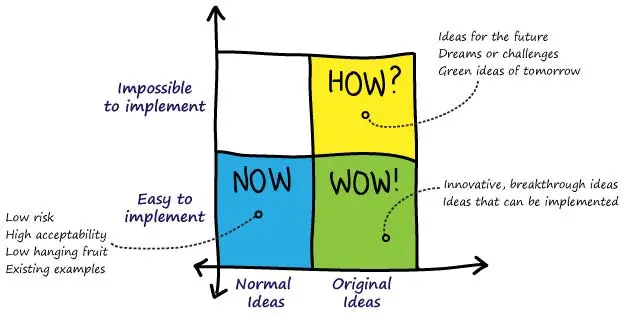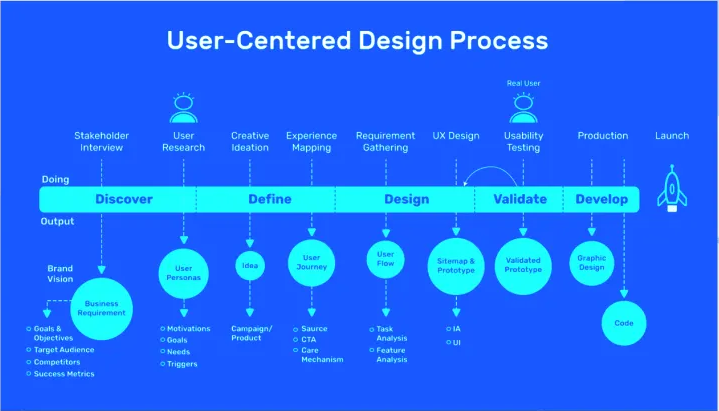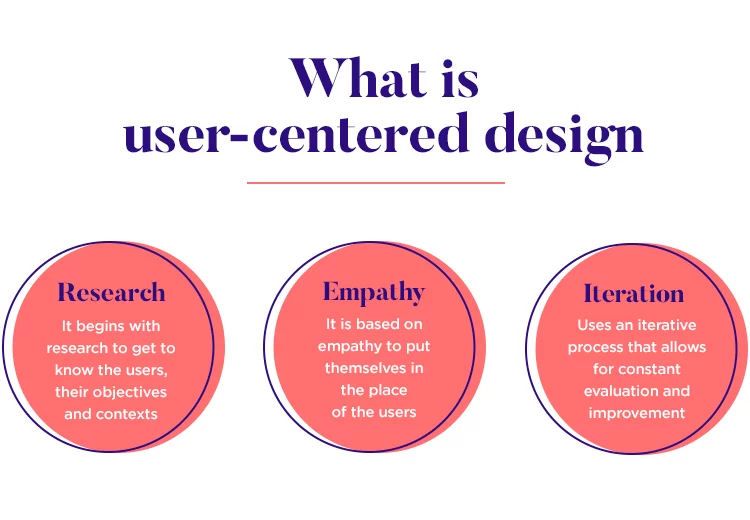A UX Designer’s Guide to Idea Selection
In the world of UX design and innovation, brainstorming new ideas is just the beginning. The real challenge lies in selecting the right ideas to develop further.
The How-Now-Wow Matrix is a powerful tool that helps designers and teams evaluate ideas based on feasibility and originality.
This post will provide an in-depth look at this matrix, offering practical insights into its use, best practices, and how it can be integrated into a UX workflow.
What is the How-Now-Wow Matrix?
The How-Now-Wow Matrix is a 2×2 decision-making framework that classifies ideas into three categories based on their ease of implementation and level of originality.
It is particularly useful in UX and product development, helping teams prioritize ideas effectively.
Components of the Matrix
The matrix consists of two axes:
- X-axis: Originality of the idea (Normal vs. Original)
- Y-axis: Ease of implementation (Easy vs. Impossible)
This creates three key quadrants:
1. Now Ideas (Blue Quadrant)
- These are low-risk, high-acceptability ideas.
- Often incremental improvements or “low-hanging fruit.”
- Easy to implement and typically fill existing gaps.
- Examples: Tweaking a checkout flow to reduce friction, improving an existing onboarding process.
2. Wow Ideas (Green Quadrant)
- Highly innovative, breakthrough ideas.
- Feasible within the current constraints (technology, budget, resources).
- Have the potential to significantly improve user experience or create a competitive advantage.
- Examples: AI-powered user personalization, gamification of a UX process.
3. How Ideas (Yellow Quadrant)
- Radical, ambitious ideas that seem impossible to implement today.
- Require new technologies, significant investment, or cultural shifts.
- Serve as inspiration for future projects.
- Examples: A fully autonomous UX interface that anticipates user needs using brainwave data.
How to Use the How-Now-Wow Matrix in UX Design
1: Generate Ideas
- Conduct brainstorming sessions, design sprints, or ideation workshops.
- Use tools like mind maps, sketching, and collaborative whiteboards (e.g., Miro, FigJam, or MURAL).
- Encourage divergent thinking to ensure a diverse range of ideas.
2: Set Up the Matrix
- Draw a 2×2 grid on a whiteboard or use digital tools like Notion, Trello, or Figma.
- Label each quadrant as Now, Wow, and How.
- Ensure clarity in definitions so that participants understand the criteria.
3: Evaluate and Categorize Ideas
- List all generated ideas on sticky notes.
- Each team member receives colored dots (3 for each category: Now, Wow, How).
- Team members vote on the best ideas in each category by placing dots on the ideas.
- Determine the final classification based on the majority votes.
4: Prioritize and Implement
- Now Ideas → Implement immediately for quick wins.
- Wow Ideas → Develop an execution roadmap.
- How Ideas → Monitor for future potential and technological advancements.
Benefits of Using the How-Now-Wow Matrix in UX
- Structured Decision-Making – Helps teams move beyond ideation and into execution.
- Prioritization of Resources – Focuses energy on feasible, high-impact solutions.
- Innovation Without Risk – Encourages disruptive thinking while staying realistic.
- Team Alignment – Creates consensus on which ideas to pursue first.
Real-World Example: How Airbnb Uses the Matrix
Airbnb leverages a similar framework in its design sprints and innovation labs. They:
- Identify pain points in the user journey.
- Brainstorm solutions (Now, Wow, How ideas).
- Implement Now Ideas quickly (e.g., minor UI tweaks).
- Develop Wow Ideas strategically (e.g., AI-driven customer service bots).
- Track How Ideas for the future (e.g., VR-based immersive property tours).
Best Practices for Effective Use
- Involve cross-functional teams (Designers, PMs, Engineers, Marketing).
- Use real user feedback to validate Wow Ideas.
- Keep an open mind – Radical ideas may become feasible sooner than expected.
- Revisit the matrix periodically to reassess How Ideas.
Tools to Enhance the How-Now-Wow Matrix
- Miro/FigJam – Digital whiteboarding tools for remote collaboration.
- Airtable/Trello – Idea tracking and prioritization.
- Google Analytics/Hotjar – Validate ideas with real user behavior data.
Conclusion
The How-Now-Wow Matrix is an invaluable tool in the UX designer’s toolkit. It bridges the gap between creativity and execution, ensuring that the best ideas move forward in a structured, strategic manner. Whether you’re optimizing an existing product or envisioning the future of user experience, integrating this framework will enhance your decision-making process and lead to impactful innovation.
Further Reading
- IDEO Design Thinking Resources (https://www.ideou.com/)
- Google Design Sprints (https://designsprintkit.withgoogle.com/)
- Lean UX Principles (https://www.oreilly.com/library/view/lean-ux-2nd/9781491952796/)
By leveraging the How-Now-Wow Matrix, UX professionals can navigate the complexities of idea selection with clarity and confidence, ultimately delivering solutions that are both innovative and achievable.


